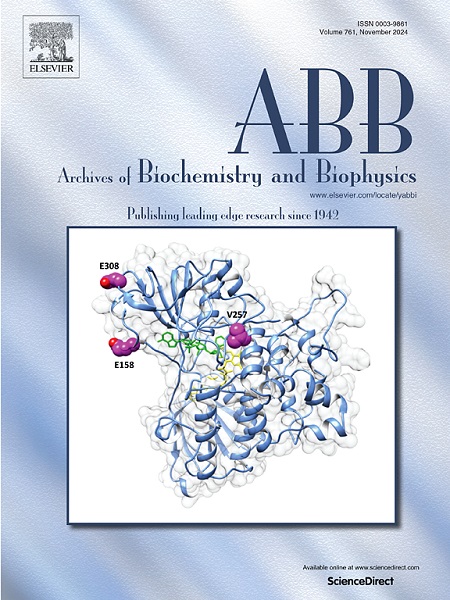Standardization of lipid sample preparation for monitoring phospholipase activity
IF 3.8
3区 生物学
Q2 BIOCHEMISTRY & MOLECULAR BIOLOGY
引用次数: 0
Abstract
Phospholipase enzymes, such as A1, A2, B, and D, are found in the venom of venomous animals, including brown spiders. Phospholipase D (PLD) isoforms from brown spider venom can cause dermonecrosis, hemolysis, and nephrotoxicity. New methods to monitor PLD activity are essential for understanding its mechanisms and molecular characteristics. One effective approach is using 31P nuclear magnetic resonance (31P NMR) spectroscopy to track PLD enzymatic activity by identifying the 31P signals of phosphorylated substrates and products. However, sample preparation for 31P NMR is challenging, as the lipid substrates’ carbon chain length and unsaturation degree can affect solubilization, oxidation, and enzyme interaction, impacting the reaction kinetics. This study standardizes a phospholipid sample preparation method with fatty acids of different chain lengths for monitoring PLD activity. The addition of CHAPS detergent is essential for solubilizing lipids with long-chain fatty acids, but its concentration needs optimization, as higher amounts can inhibit PLD activity. Storing lipids in ethanol, forming lipid films, and injecting nitrogen into stock solutions improved lipid quantification and assay reproducibility. These standardized conditions can be adapted to other experimental approaches for monitoring phospholipase activity.

求助全文
约1分钟内获得全文
求助全文
来源期刊

Archives of biochemistry and biophysics
生物-生化与分子生物学
CiteScore
7.40
自引率
0.00%
发文量
245
审稿时长
26 days
期刊介绍:
Archives of Biochemistry and Biophysics publishes quality original articles and reviews in the developing areas of biochemistry and biophysics.
Research Areas Include:
• Enzyme and protein structure, function, regulation. Folding, turnover, and post-translational processing
• Biological oxidations, free radical reactions, redox signaling, oxygenases, P450 reactions
• Signal transduction, receptors, membrane transport, intracellular signals. Cellular and integrated metabolism.
 求助内容:
求助内容: 应助结果提醒方式:
应助结果提醒方式:


